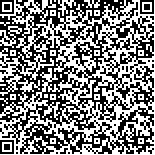下载中心
优秀审稿专家
优秀论文
相关链接
摘要

为确保数据的定量化应用,国际航天遥感大国始终围绕定标技术开展研究,定标精度不断提高。在经历数十年发展之后,受传统的遥感载荷定标系统设计以及地面辐射校正技术理论极限的制约,目前遥感卫星辐射定标停留在太阳反射谱段2%,红外谱段0.2 K的不确定性水平,其精度难以继续提高。进入21世纪,气候变化问题成为全球关注的热点,全球气候变化研究对遥感卫星辐射测量精度提出了前所未有的要求。ASIC3(Achieving Satellite Instrument Calibration for Climate Change)报告指出,为了有效检测全球气候变化信号,准确预测气候变化,遥感卫星观测必须长期保持在太阳反射谱段0.3%、红外谱段0.1 K,太阳总辐射0.01%的不确定性水平。为了迎接这一挑战,欧洲和美国相继提出了CLARREO计划和TRUTHS计划,试图通过发射具有超高辐射测量精度的基准卫星,在监测气候变化信号的同时,标定其他遥感卫星,提升全球遥感卫星整体定标精度。同期,中国也提出了空间辐射测量基准技术的概念,并在“十二五”和“十三五”,通过国家高技术研究发展计划和国家重点研发计划持续支持星上相变固定点黑体、空间低温辐射计等尖端技术的研发,进而逐渐形成发射空间辐射测量基准卫星的路线图。从目前发展态势上看,中国有可能成为第一个建立空间辐射测量基准的国家,率先实现卫星平台辐射观测直接向国际单位(SI)的溯源。
In the demand of the quantitative use of satellite data, the accuracy of instrument calibration improved significantly because of the efforts of major satellite operators. However after decades of development, the current premium uncertainty of radiometric calibration of remote sensing satellites stays at 2% in visible, 0.5 k in infrared spectrum, due to the design restrains of on-board calibration devices, and also the theoretical limitation of vicarious techniques. Since the beginning of 21 st century, global climate change has become the common concern of international community. Global climate research placed an unprecedented need on the accuracy of radiometric calibration for remote sensing satellites. According to ASIC3 report, in order to detect climate change signals effectively and make accurate predictions, the acceptable uncertainty of radiometric calibration is 0.3% for solar reflective spectrum, 0.1 k for infrared spectrum, and 0.01% for total solar irradiance. Living up to the challenge, EU and US proposed TRUTHS and CLARREO plans, with the common goal of launching benchmark satellites. The benchmark satellites, with their extreme accuracy, designed to monitor climate change, could also calibrate other remote sensing satellites in orbit, raising the observation accuracy of the whole global satellite system to a new level. Meanwhile, China also advocated the concept of space radiometric observation benchmark system and launched two five-years projects to develop cutting-edge techniques such as phase-change warm load blackbody and on-orbit cryogenic absolute radiometer etc., aiming at establishing the absolute radiometric reference in space. With the support of these projects, the spaceborne SI-traceable calibrators for Reflective Solar Bands (RSBs) and Thermal Emissive Bands (TEBs) is developing. In the middle of the next five years, we can complete the development of the principle prototype of the radiometric benchmark instruments, and then achieve a comprehensive performance verification.Comparing to its counterparts, China could more likely become the first country to launch radiometric benchmark satellite, which leads remote sensing satellites to a SI-traceable era.

